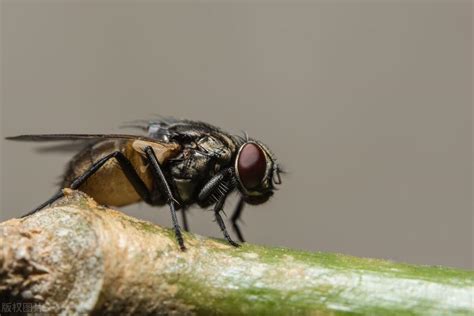The Surprising World of Fly Olfaction
Flies, those ubiquitous insects, often evoke images of buzzing, swarming pests. However, beyond their seemingly mundane existence lies a complex sensory world, including a remarkable sense of smell.

How Do Flies Smell?
Flies possess an intricate olfactory system that allows them to detect and discriminate a vast array of chemical odors. These odors, emitted from a variety of sources, provide vital cues for their survival and behavior.
Olfactory Organs
Flies’ primary olfactory organs are located on their antennae and maxillary palps, which are sensory appendages near their mouths. These organs are covered in tiny, hair-like structures called sensilla, which contain specialized receptor cells that can detect specific chemical compounds.
Sensory Function
When odor molecules come into contact with the sensilla, they bind to specific receptors, triggering a series of biochemical reactions that transmit the signal to the fly’s brain. The brain then processes the information, allowing the fly to identify and respond to the odor.
How Sensitive Are Flies’ Sense of Smell?
Flies’ sense of smell is highly sensitive, enabling them to detect even minute amounts of odors.
- Flies can detect some odors at concentrations of less than 1 part per billion (ppb).
- They can detect and discriminate between thousands of different odors.
What Do Flies Smell?
The range of odors that flies can detect is extensive, including:
- Food sources (e.g., decaying organic matter, fruits, and nectar)
- Mating odors (e.g., pheromones released by potential mates)
- Hosts for egg-laying (e.g., ripe fruits or decaying meat)
- Predators and parasites (e.g., chemicals emitted by spiders or wasps)
How Flies Use Their Sense of Smell
Flies’ sense of smell plays a critical role in their daily lives, helping them with:
Locating Food
Flies are attracted to odors emitted by decaying organic matter, including food waste, animal carcasses, and rotting fruit. They use their sense of smell to locate these food sources, ensuring their survival.
Finding Mates
Many fly species use pheromones, chemical signals released by potential mates, to attract and identify each other. Flies can detect these pheromones and use them to find suitable partners for reproduction.
Selecting Egg-Laying Sites
Female flies rely on their sense of smell to select suitable egg-laying sites. They are attracted to odors emitted by ripe fruits, decaying meat, or other substances that provide optimal conditions for their offspring.
Avoiding Predators
Flies can detect odors emitted by predators and parasites, such as spiders and wasps. This allows them to avoid these threats and increase their chances of survival.
Innovative Applications
The intriguing capabilities of flies’ sense of smell have inspired novel applications in various fields, such as:
Medical Diagnostics
Flies have been shown to be capable of detecting and discriminating between odors associated with different diseases, including cancers and infectious diseases. This has led to the development of new diagnostic tools that utilize flies’ olfactory abilities.
Forensic Entomology
Forensic entomologists study the succession of insects that feed on human remains in order to determine the time of death. Flies are often the first insects to arrive at a crime scene, and their ability to detect odors associated with decaying organic matter makes them valuable tools in forensic investigations.
Pest Control
Researchers are exploring the use of pheromones and other odor cues to attract and trap flies, providing a more targeted and environmentally friendly approach to pest control.
Conclusion
Flies may be perceived as ordinary insects, but they possess an extraordinary sense of smell that enables them to thrive in a wide range of environments. Their olfactory abilities have sparked innovative applications in medicine, forensics, and pest control, demonstrating the potential of harnessing the sensory capabilities of these ubiquitous creatures.
